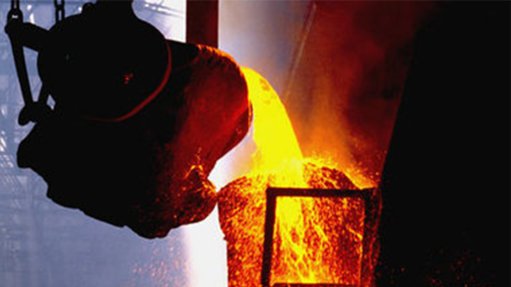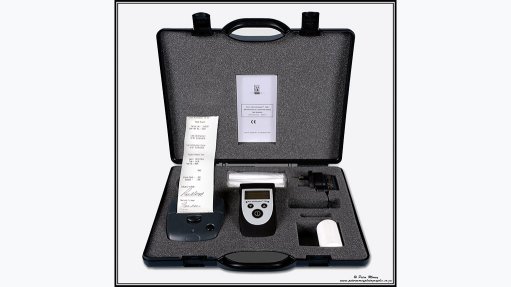Innovative tech is changing industry trends
The last half century has seen a massive shift in geological thinking, and technological innovation and developments, in all facets of diamond exploration, mining, processing, recovery, manufacturing, marketing and sales, says exploration, evaluation and mining geologist Dr John Bristow.
He notes that new technologies for exploration and evaluation of kimberlites and lamproites include rapid ‘high-resolution’ airborne geophysical surveys, drones to delineate lineaments and trap-sites in land-based alluvial, and enhanced side-scan sonar and bedrock profiling methods for mapping and delineating marine alluvial deposits.
“There have been advances in the use of indicator-mineral sampling and treatment, recovery, analytics and interpretation, particularly for mantle-derived eclogitic and peridotitic garnets, pyroxenes, olivines, chromites, and ilmenite. The use of peridotitic-garnets to target and rank diamondiferous-pipes has made significant strides, likewise, the application of micro-diamond studies in the evaluation and pre-mining assessment of diamond projects.”
Progress in fragmentation and comminution of primary diamond bearing ores, including high-pressure grinding rolls and autogenous grinding, have enhanced efficiencies and liberation, with concomitant reduction in diamond breakage. “This technology was particularly advantageous to the processing of high-grade Argyle lamproite ore containing predominantly poor-quality diamonds, ensuring less breakage and improved revenues.”
Likewise, in the exploitation of alluvial diamond deposits, the use of high frequency sand screens has reduced fines and sand reporting to rotary pans and dense-media circuits, substantially lowering the volume of water required for ore processing, and decreasing the size and costs of slimes dams.
Bristow notes that the recovery of diamonds has benefited from significant advances in X-ray systems for small and large operations, such as, for example, Bourevestnik and X-ray tomography (XRT) systems. This has ensured more efficient and far greater numbers of large high-value Type 2a diamond recoveries.
Sorting technology solutions provider Tomra has been a key player in this space and, more recently, XRT units constructed by De Beers and installed at the Jwaneng diamond mine, in southern Botswana have effectively provided a ‘single-particle sorter’ facility for medium and large diamond sizes.
Automated sorting and colour-grading, image-analysis and software evaluation programs such as the Israeli-developed Sarine and Galaxy systems, as well as linked automatic laser-cutting systems for rough goods, are revolutionising manufacturing and recoveries of polished product from rough diamonds.
“The more recently introduced Swiss Synova laser-cutting system uses a water-based laser system that reduces diamond damage and wastage, and produces high-quality finished surfaces, requiring less final polishing than conventional laser cutting systems.”
Bristow also points to the use of blockchain technology to track diamonds from ‘source to sales point’, thereby ensuring transparency, and ultimately attracting a ‘premium’ on pricing. He states that this application of blockchain is “making strides in the diamond business”.
Additionally, he cites the De Beers’ Tracr system – first launched in a research and development mode in 2018 – which is the world’s only distributed diamond blockchain that starts at the source, and was named by Forbes as one of the 50 leading blockchain solutions in both 2020 and 2022.
“It is said to provide tamperproof source assurance at scale, ensuring rough diamond sightholders receive an immutable record of a diamond’s provenance and point of origin. The Tracr platform combines a range of leading technologies, including blockchain, artificial intelligence, the Internet of Things, and advanced security and privacy technologies, to track a diamond’s journey through the value chain.”
Overall, the industry is experiencing enhanced transparency, reduced ‘mine to market’ timelines, lower financing costs across the diamond pipeline, and improved profit margins. These technologies and information platforms are increasingly driving online marketing, auctions, and trade of rough goods, reducing the time, travel and costs for rough buyers who would previously travel to suppliers to physically inspect goods before making bids.
Bristow adds that “Covid-19 lockdowns and travel restrictions since early 2020 have fast-tracked these new developments in the rough diamond sector, and especially in the polished sector”.
He points to Botswana’s State-owned Okavango Diamonds, which is now selling up to 25% of the country’s rough production, as a good example of increased uptake of technology to streamline processes and enhance the sale of rough goods by auction.
However, in spite of the technology-driven progress, the diamond sector has not seen a new world-class, Tier 1 diamond mine discovery since 1991. “Existing mines have mostly transitioned to underground operations with concomitant reduction of mined product output. The famous pink diamond producer Argyle Diamonds closed in November 2022, and several other small operations and projects in Botswana, Canada and Lesotho, have shut,” Bristow laments.
He notes that global natural rough diamond production has dropped by about 30% over four years – from 152-million carats in 2017 to 107-million carats in 2021 – which has paved the way for the growth of synthetic or laboratory-grown diamonds.
The shortage of rough diamond supply that the international diamond market currently faces, and the uncertainty being created by the Russian-Ukraine conflict as well as the resultant sanctions on Russian miner Alrosa, which produces about 30% of the world’s rough diamonds, are starting to impact on the international market, he adds.
“The world shortage of rough supply, and the challenges and uncertainties faced by the international diamond business, should be a positive development for South African diamond producers, particularly for the numerous small land- and marine-based alluvial miners, and small kimberlite diamond producers. These alluvial diamond producers consistently produce the world’s highest run-of-mine value gemstone diamonds.
“However, the challenges of obtaining prospecting and mining, and water-use licences, owing to the dysfunctionality of the Department of Minerals Resources and Energy, the ‘one-size fits-all’ mine health and safety regulations, and excessive red-tape, are stifling the productivity and survival of this small and junior diamond mining sector.”
Bristow comments that the presentations given during the June 2022 Online Diamond Short Course, and the July 2022 mine and field trips, will address the range of technology-driven interventions driving modernisation of this 2 000-year-old industry. “Equally they will highlight the challenges of exploration, declining rough supply, and the lack of new diamond mines discoveries, while highlighting likely future trends.”
Article Enquiry
Email Article
Save Article
Feedback
To advertise email advertising@creamermedia.co.za or click here
Press Office
Announcements
What's On
Subscribe to improve your user experience...
Option 1 (equivalent of R125 a month):
Receive a weekly copy of Creamer Media's Engineering News & Mining Weekly magazine
(print copy for those in South Africa and e-magazine for those outside of South Africa)
Receive daily email newsletters
Access to full search results
Access archive of magazine back copies
Access to Projects in Progress
Access to ONE Research Report of your choice in PDF format
Option 2 (equivalent of R375 a month):
All benefits from Option 1
PLUS
Access to Creamer Media's Research Channel Africa for ALL Research Reports, in PDF format, on various industrial and mining sectors
including Electricity; Water; Energy Transition; Hydrogen; Roads, Rail and Ports; Coal; Gold; Platinum; Battery Metals; etc.
Already a subscriber?
Forgotten your password?
Receive weekly copy of Creamer Media's Engineering News & Mining Weekly magazine (print copy for those in South Africa and e-magazine for those outside of South Africa)
➕
Recieve daily email newsletters
➕
Access to full search results
➕
Access archive of magazine back copies
➕
Access to Projects in Progress
➕
Access to ONE Research Report of your choice in PDF format
RESEARCH CHANNEL AFRICA
R4500 (equivalent of R375 a month)
SUBSCRIBEAll benefits from Option 1
➕
Access to Creamer Media's Research Channel Africa for ALL Research Reports on various industrial and mining sectors, in PDF format, including on:
Electricity
➕
Water
➕
Energy Transition
➕
Hydrogen
➕
Roads, Rail and Ports
➕
Coal
➕
Gold
➕
Platinum
➕
Battery Metals
➕
etc.
Receive all benefits from Option 1 or Option 2 delivered to numerous people at your company
➕
Multiple User names and Passwords for simultaneous log-ins
➕
Intranet integration access to all in your organisation


















